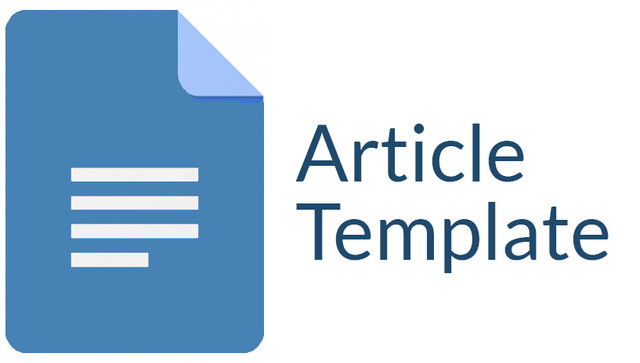Extraction of Collagen from Kedukang Fish Bone (Hexanematichthys sagor) at Various Concentrations of Acetic Acid Solution
DOI:
https://doi.org/10.30736/grouper.v16i1.319Keywords:
Amides, Functional groups, Jambal roti, Proksimat, YieldAbstract
The bones of kedukang fish, a by-product of jambal roti production in Pangandaran, have the potential to be a source of collagen. Collagen extraction can be done chemically using acetic acid solution. The extraction process is declared effective if it produces optimal collagen yield. This study aims to determine the best acetic acid concentration in producing optimal collagen yield. The research was conducted from December 2024 to February 2025 at the Tropical Marine Fisheries Laboratory and Central Laboratory of Padjadjaran University and the Center for Testing and Application of Fishery Product Quality (BP2MHP) Semarang. The method used was experimental method, namely the difference in acetic acid concentration in collagen extraction with three treatments (0.5 M; 0.75 M; and 1 M). Parameters observed included yield, physicochemical characteristics and functional groups of collagen from the best treatment. Based on the results, 1 M acetic acid concentration treatment was the best treatment with a yield value of 34.62% ± 1.31. The characteristics of collagen produced include moisture content of 9.507%, ash content of 2.60%, protein content of 64.91% and pH 6.94. FTIR results showed collagen identified Amide A at the absorption peak of 3404 cm-¹, Amide I at the absorption peak of 1698.40 cm-¹ and 1636.98 cm-¹, Amide II at the absorption peak of 1546.40 cm-¹ and Amide III at the absorption peak of 1230.36 cm-¹.
Downloads
References
Agustin, D. (2016). Karakterisasi Fisikokimia Gelatin dari Limbah Tulang Ikan Tongkol (Euthynnus affinis)(Kajian: Lama Perendaman dan Suhu Ekstraksi (Doctoral dissertation, Universitas Brawijaya).
Aisyah, D., Mamat, I., Rosufila, Z, & Ahmad, N. M. (2012). Program Pemanfaatan Sisa Tulang Ikan Untuk Produk Hidroksiapatit: Kajian Di Pabrik Pengolahan Kerupuk Lekor Kuala Trengganu-Malaysia. Jurnal Sosioteknologi, 11(26), 116-125.
Alhana, Suptijah. P., & Tarman K. (2015). Ekstraksi dan Karakterisasi Kolagen dari Daging Teripang Gama. Jurnal Pengolahan Hasil Perikanan Indonesia, 18(2), 150-161.
Andhikawati, A., & Permana, R. (2024). Diseminasi Pemetaan Sumber Potensi Limbah Pengolahan Perikanan di Kecamatan Pangandaran. Farmers: Journal of Community Services, 5(1), 84-88.
Ariyanti, A., Dewi, M., Hapsari, A. P., & Mashadi, S. (2018). Perbandingan Kadar Kolagen Cangkang Kerang Darah (Anadara Granosa) dengan Cangkang Kerang Hijau (Mytilus Viridis) Di Bandengan, Kendal, Jawa Tengah. Jurnal Pharmascience, 5(2), 134–142.
Astiana, I., Nurjanah, N., & Nurhayati, T. (2016). Characterization of Acid Soluble Collagen From Redbelly Yellowtail Fusilier Fish Skin (Caesio Cuning). Jurnal Pengolahan Hasil Perikanan Indonesia, 19(1), 79-93.
Badan Standardisasi Nasional. (2006). SNI 01-2354.4-2006 tentang Penentuan Kadar Protein Metode Total Nitrogen Produk Perikanan. Jakarta: BSN.
Badan Standardisasi Nasional. (2010). SNI 2354.1:2010 tentang Penentuan Kadar Abu dan Abu Tak Larut dalam Asam pada Produk Perikanan. Jakarta: BSN.
Badan Standardisasi Nasional. (2015). SNI 2354.2:2015 tentang Pengujian Kadar Air pada Produk Perikanan. Jakarta: BSN.
Badan Standardisasi Nasional. (2020). SNI 8076:2020 tentang Kolagen Kasar dari Sisik atau Kuli Ikan. Jakarta: BSN.
Chamidah, A. & Elita Ch. (2002). Pengaruh Pengolahan terhadap Kualitas Gelatin Kulit Ikan Hiu. Dalam Seminar Nasional PATPI. ISBN : 979-95249-6-2, Malang.
Cheheltani, R., Mcgoverin, C. M., Rao, J., Vorp, D. A., Kiani, M. F., & Pleshko, N. (2014). Fourier Transform Infrared Spectroscopy to Quantify Collagen and Elastin in an in Vitro Model of Extracellular Matrix Degradation in Aorta. Analyst, 139(12), 3039-3047.
Chvapil, M. (1979). Industrial Uses Of Collagen. Fibrous Proteins, Scientific, Industrial, And Medical Aspects/Edited By DAD Parry, LK Creamer.
Darmanto, Y. S., Agustini, T. W., & Swastawati, F. (2012). Efek Kolagen dari Berbagai Jenis Tulang Ikan terhadap Kualitas Miofibril Protein Ikan selama Proses Dehidrasi [Effect of Various Fish Bone Collagens on the Quality of Myofibril Fish Protein During Dehydration Process]. Jurnal Teknologi dan Industri Pangan, 23(1), 36-36.
Duan, R., Zhang, J., Du, X., Yao, X., & Konno, K. (2009). Properties of Collagen From Skin, Scale and Bone of Carp (Cyprinus Carpio). Food Chemistry, 112(3), 702-706.
Fabella, N., Herpandi, H., & Widiastuti, I. (2018). Pengaruh Metode Ekstraksi terhadap Karakteristik Kolagen dari Kulit Ikan Patin (Pangasius Pangasius). Jurnal Fishtech, 7(1), 69-75.
Gaspersz, V. (1991). Metode Perancangan Percobaan. CV. ARMICO. Bandung.
Downloads
Published
How to Cite
Issue
Section
License
Copyright (c) 2025 Veronica Veronica, Junianto Junianto, Aulia Andhikawati, Emma Rochima

This work is licensed under a Creative Commons Attribution-NonCommercial-ShareAlike 4.0 International License.







.jpg)
1.png)



